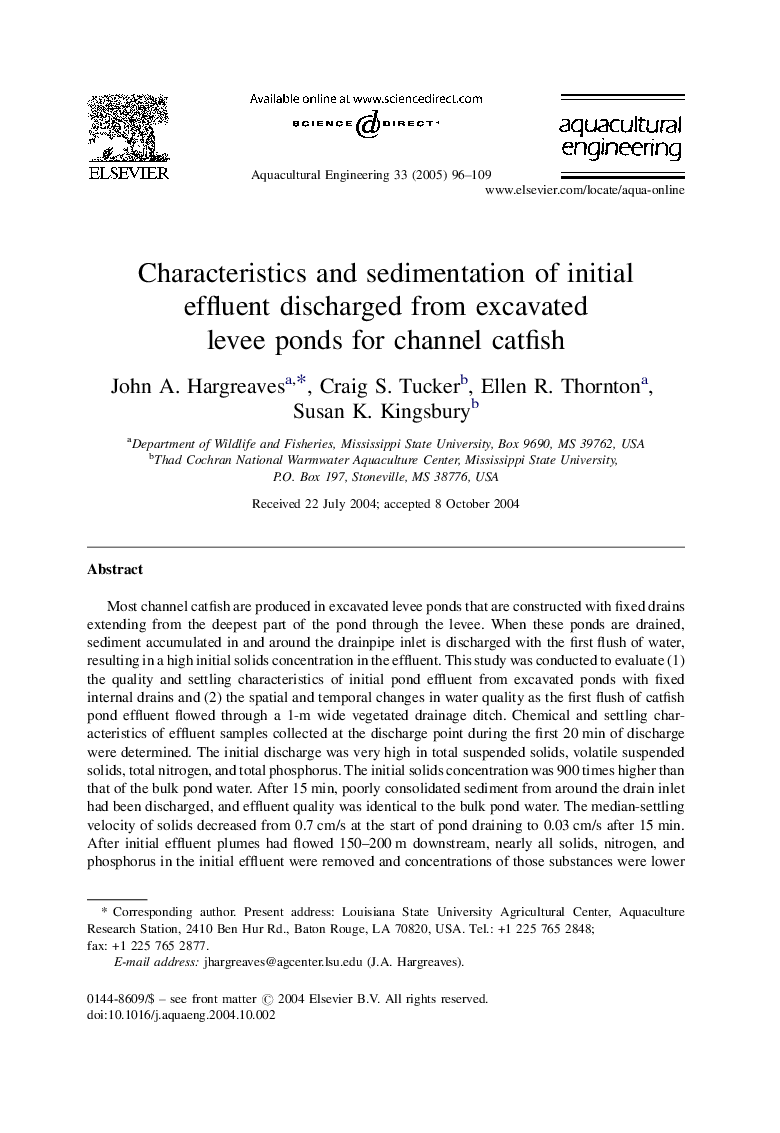| Article ID | Journal | Published Year | Pages | File Type |
|---|---|---|---|---|
| 9477306 | Aquacultural Engineering | 2005 | 14 Pages |
Abstract
Most channel catfish are produced in excavated levee ponds that are constructed with fixed drains extending from the deepest part of the pond through the levee. When these ponds are drained, sediment accumulated in and around the drainpipe inlet is discharged with the first flush of water, resulting in a high initial solids concentration in the effluent. This study was conducted to evaluate (1) the quality and settling characteristics of initial pond effluent from excavated ponds with fixed internal drains and (2) the spatial and temporal changes in water quality as the first flush of catfish pond effluent flowed through a 1-m wide vegetated drainage ditch. Chemical and settling characteristics of effluent samples collected at the discharge point during the first 20Â min of discharge were determined. The initial discharge was very high in total suspended solids, volatile suspended solids, total nitrogen, and total phosphorus. The initial solids concentration was 900 times higher than that of the bulk pond water. After 15Â min, poorly consolidated sediment from around the drain inlet had been discharged, and effluent quality was identical to the bulk pond water. The median-settling velocity of solids decreased from 0.7Â cm/s at the start of pond draining to 0.03Â cm/s after 15Â min. After initial effluent plumes had flowed 150-200Â m downstream, nearly all solids, nitrogen, and phosphorus in the initial effluent were removed and concentrations of those substances were lower than in bulk pond water. The duration of poor water quality of initial effluent from catfish ponds with internal drains was brief (ca. 10Â min) and discharged solids settled rapidly after flowing through 150-200Â m of vegetated ditch extending from pond effluent outfalls.
Related Topics
Life Sciences
Agricultural and Biological Sciences
Aquatic Science
Authors
John A. Hargreaves, Craig S. Tucker, Ellen R. Thornton, Susan K. Kingsbury,
